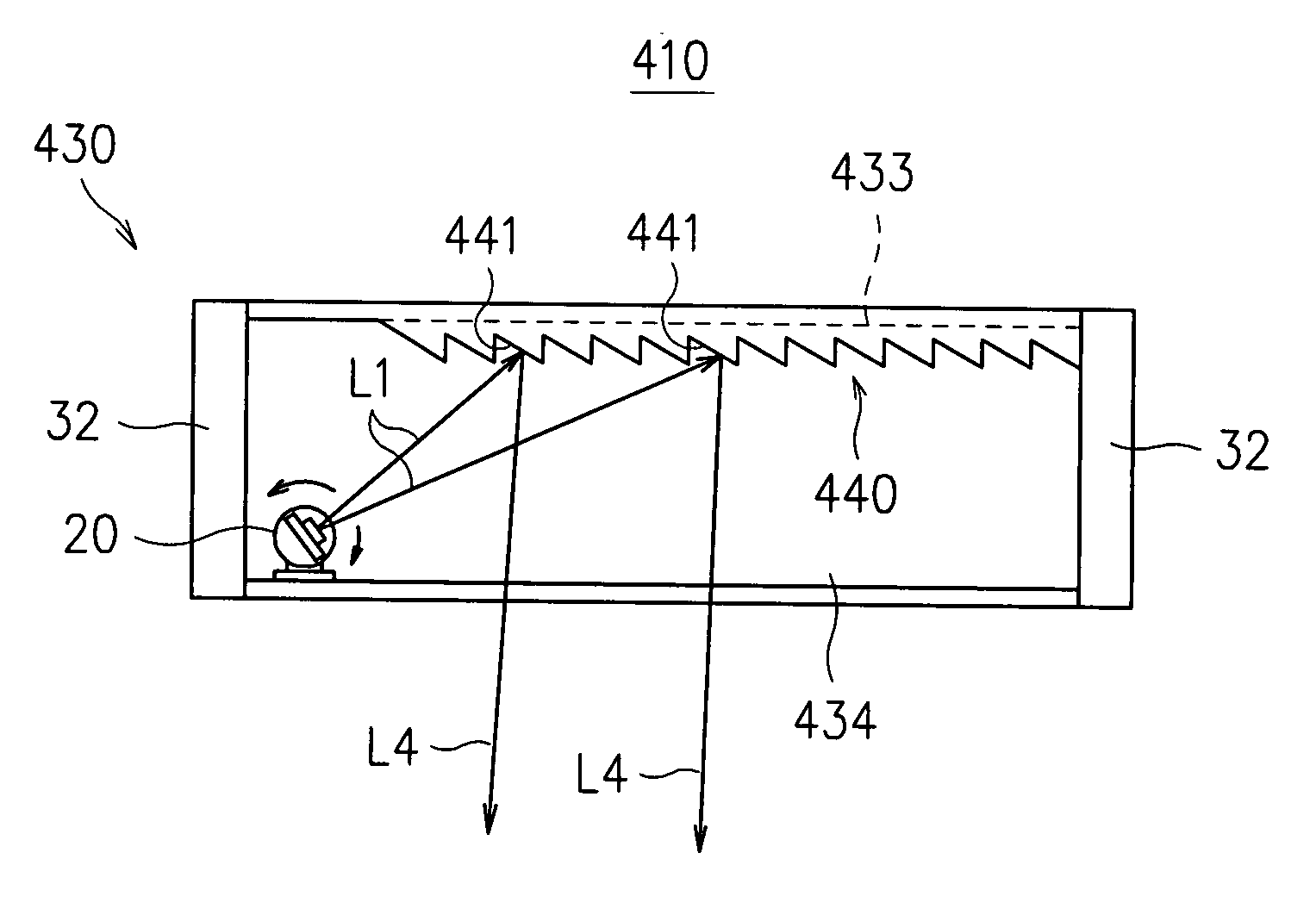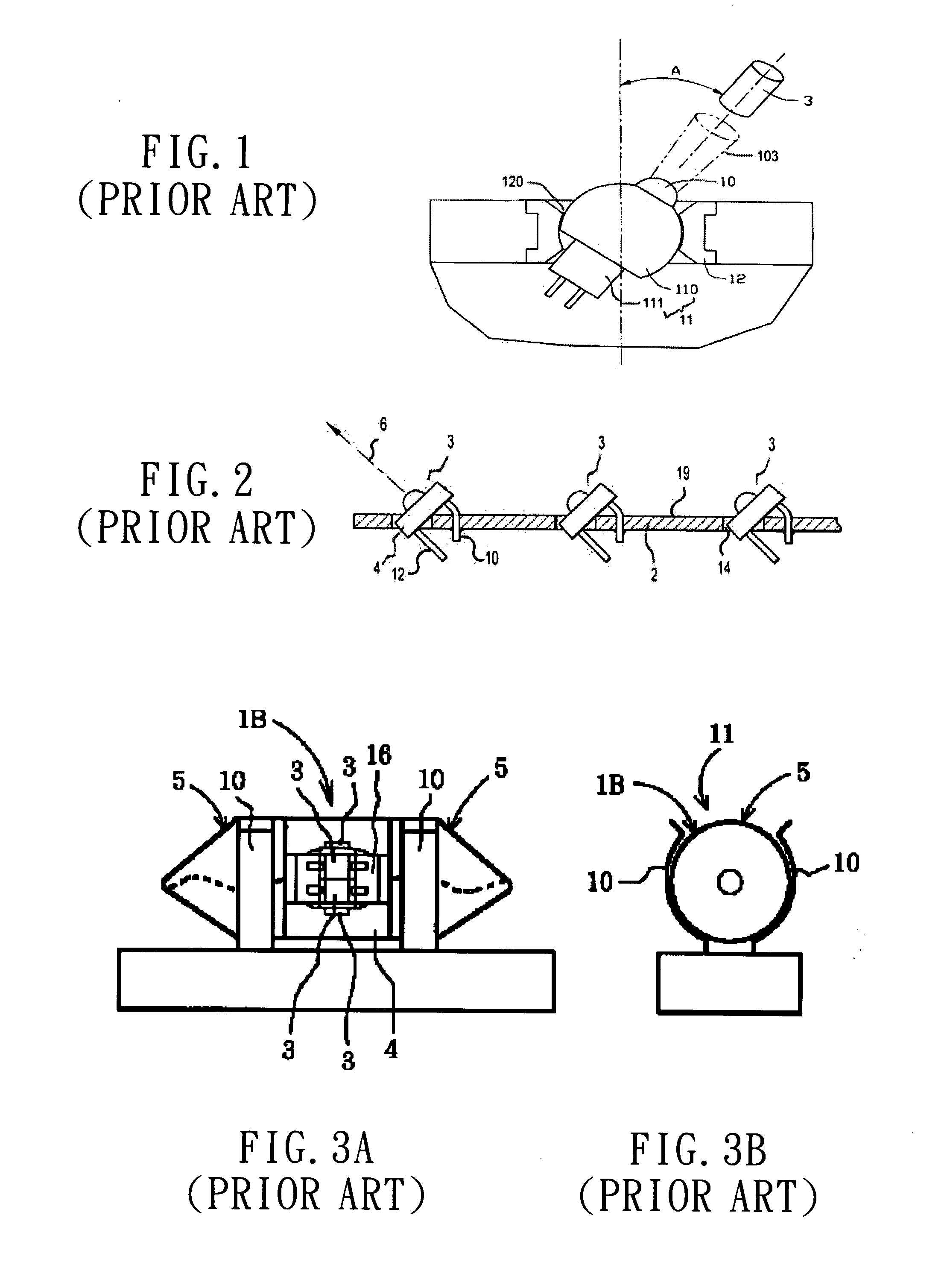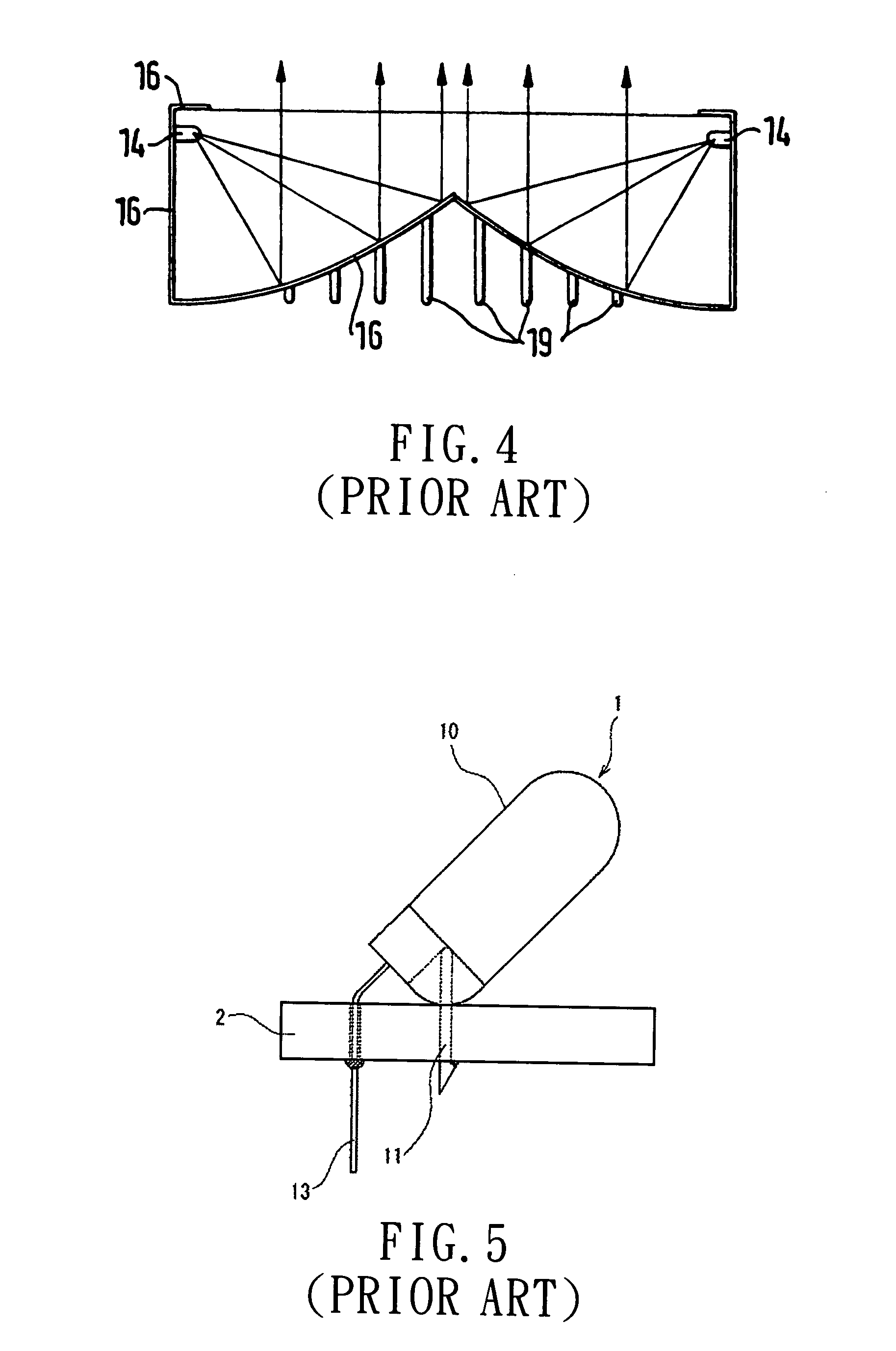As commonly known that
tungsten-filament lamps and energy-saving light bulbs are point sources and fluorescent lamps are
line source, all of the abovementioned lamps can only emanate light by an radiating manner such that their light angles are not adjustable.
However, although LEDs are preferred as they are small in size, there are still many to be improved while applying the same in luminaires:(1) As LED is a directional light source, with the maximum emitted power in the direction perpendicular to the emitting surface, that is not suitable to be used in conventional luminaires, a matching reflective cover or a bottom-lighting structure is required.(2) As the brightness produced by a single LED is generally insufficient for most luminaires that it is usual for a luminaire to adopt a plurality of LEDs with fixed lighting angle as its light source, such Multi-LED luminaire with bottom-lighting structure will suffer problems, such as glare, limited illuminant area and unable to produce luminance with sufficient evenness, that cause discomfort to users.(3) As the light emitting from an LED is fixed to a specific direction, the light angle of any reflective or refractive luminaire using such LED as its light source is also fixed so that it is unable to produce various patterns of light and light-emitting angles at will for meeting various luminance requirements and thus it is comparatively not flexible enough.(4) In those conventional LED luminaires, LEDs are usually fixedly arranged on a circuit board so that it is required to dismantle and replace the whole circuit board even when there is only one LED fixed thereon is broken and required to be replaced, and it is difficult for a common
consumer to maintain / repair such conventional LED luminaire by himself.(5) It is ease to spot one broken LED or a portion of those in those conventional LED luminaires.
However, as the structure of such rotatable LED arrangement is so complicated and bulky, it is difficult to maintain and assemble.
Moreover, the design of such rotatable LED arrangement limits the LED member 10 to only emit light toward the particular side thereof facing the
detector 3 that it can not cover the whole
terrain surrounding the arrangement.
In addition, while applying such rotatable LED arrangement to any common luminaire, as the light emitting from such rotatable LED arrangement shoots directly toward the
detector 3 and there is no reflective cover configured in such rotatable LED arrangement, it will suffer problems, such as glare, limited illuminant area and unable to produce luminance with sufficient evenness.
In addition, similar to that shown in U.S. Pat. No. 6,315,432, while applying such rotatable LED arrangement to any common luminaire, as the light emitting from such rotatable LED arrangement shoots directly toward the
detector 3 and there is no reflective cover configured in such rotatable LED arrangement, it will suffer problems, such as glare, limited illuminant area and unable to produce luminance with sufficient evenness.
As the two LED arrangements, shown respectively in the two aforesaid U.S. patents, both use conventional LEDs with two contact pins as their light sources, the problems troubling those prior-art LED luminaires will also be the problems of the two, such as it is unable to produce various light-emitting angles at will, and it is required to dismantle and replace the whole circuit board even when there is only one LED fixed thereon is broken, and so on.
Take a bottom-light LED luminaire for example, although the abovementioned efforts help to improve the light efficiency thereof, but it can not vary the angle of the light being discharged out of the luminaire by adjusting the light-emitting angle of the LEDs and thus not only the light pattern preferred by a user can not be achieved, but also the uniformity of area to be lighted by the illumination device as well as the comfort of users is not preferred.
As each LED 14 is being placed flatly at the upper portion of the circumferential edge, the restricted light-emitting angle of such LED 14 will result that only a portion of light emitted therefrom can be reflected by the light-reflecting cover 16 and projected out of the illuminating device in a parallel manner while other portion will be either trapped inside the illuminating device, or being reflected out without shining on a preferred area specified by a user, so that the efficiency of the illuminating device is poor since not all light emitted from the LEDs 14 are utilized.
As there is no reflective means or refractive means being adapted in the LED arrangement, such LED arrangement is prone to suffer from glare.
In addition, it can only adjust its light-emitting angle between 0 degree to 90 degree that an additional set of device is required if some other area out of the adjusting range is required to be illuminated.
Moreover, when the LED 1 is broken and required to be replaced, the replacement operation requires to dismantle the substrate 2 as well which is very troublesome.
 Login to View More
Login to View More  Login to View More
Login to View More 


